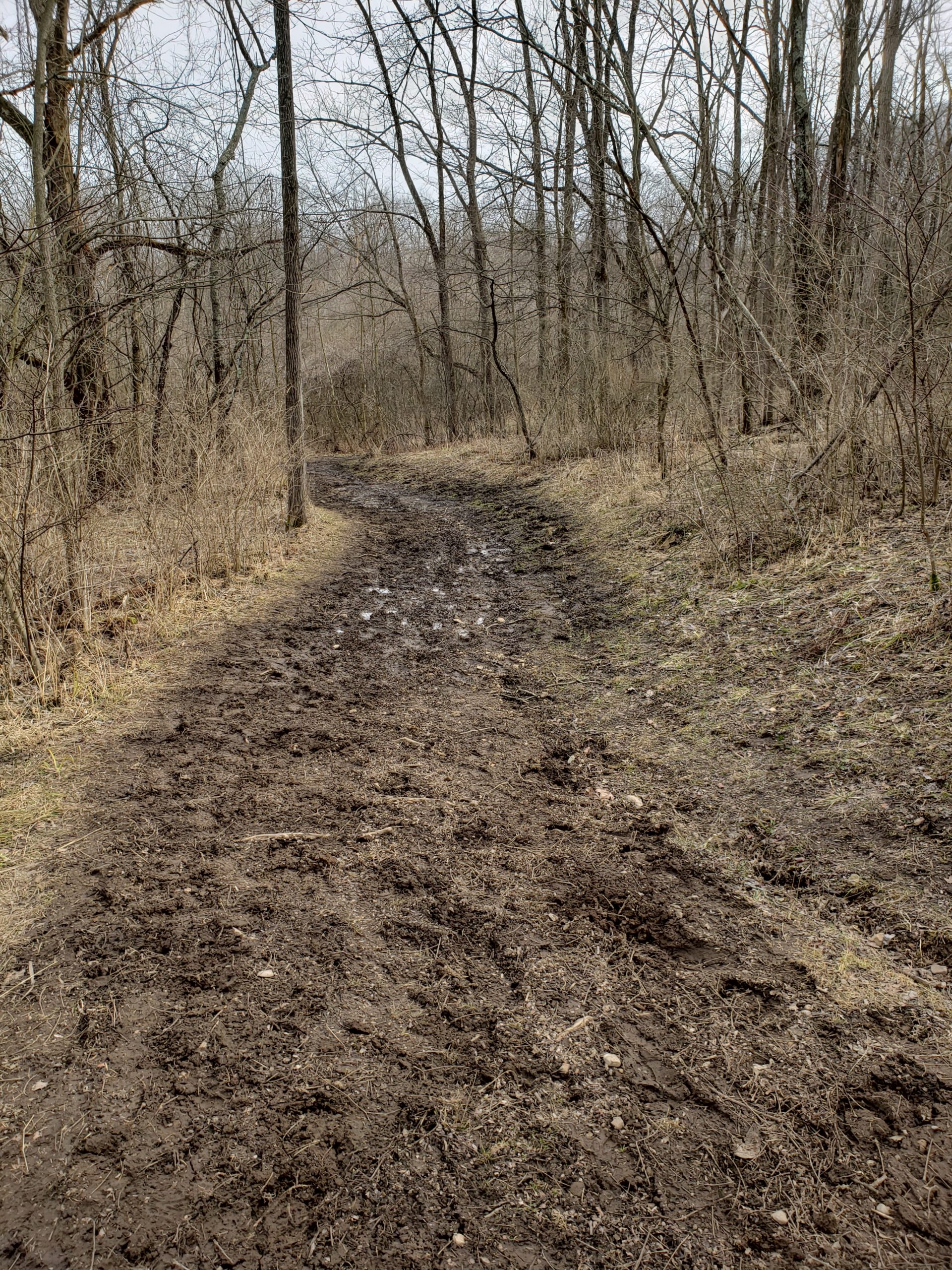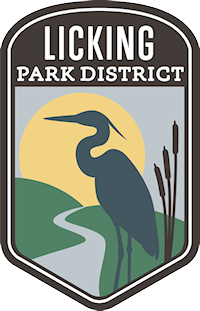Natural Surface Trail Conditions and Equestrian User Impact
 GRANVILLE, OHIO (March 16, 2021) Every spring in Central Ohio, rain will be in the forecast, LOTS of rain. And every spring, the Park District faces the challenge of determining when trails are capable of handling the impact of horse traffic. Throughout the spring season, trails tend to be more saturated and hold more water, sometimes taking days to dry. Riding horses on muddy trails increases erosion. Once ruts are formed, they are negatively impacted by more travel and water. Because of this, occasional closures to horses are required. We ask that our equestrian friends assist us in maintaining our trails by avoiding trails that are closed to horses. Trail status can be checked on our website, Facebook, Twitter and our 24-7 Trail Hotline.
GRANVILLE, OHIO (March 16, 2021) Every spring in Central Ohio, rain will be in the forecast, LOTS of rain. And every spring, the Park District faces the challenge of determining when trails are capable of handling the impact of horse traffic. Throughout the spring season, trails tend to be more saturated and hold more water, sometimes taking days to dry. Riding horses on muddy trails increases erosion. Once ruts are formed, they are negatively impacted by more travel and water. Because of this, occasional closures to horses are required. We ask that our equestrian friends assist us in maintaining our trails by avoiding trails that are closed to horses. Trail status can be checked on our website, Facebook, Twitter and our 24-7 Trail Hotline.
Whenever closures must occur, trails are closely monitored and reopened as soon as there is sufficient improvement in condition for safety and maintaining the integrity of the trails. We continue to work towards a goal of having the trails at Infirmary Mound Park be as “all season” as possible. Improvements have been made each year toward that goal. Additional trail work and improvements occur regularly at our other parks as well. We rely on the dedication and hard work of volunteers to help us keep our trails and parks well maintained and safe for everyone to enjoy. We want our trails and parks open as much as possible and practicable.
Eric Estill, president of the Ohio Horseman’s Council, offers this advice to riders: “All riders are caretakers of the trails. Access to public land to ride our horses requires every rider to be respectful of others using the trail, as well as trail conditions. The main cause of trail erosion is water. Water on the trail creates mud and when we plod through the mud, trail conditions worsen. Stay off muddy trails to prevent further erosion and maintain the safety of horse and rider.”
Riding wet trails causes significant damage because it greatly magnifies the erosion process. Additionally, “post holes” that are left behind by hooves can also harden over time and lead to trip hazards for horses and hikers. These “post holes” will hold water on the trail after rain, leading to more damage and erosion.
Park Commissioner Jim Kiracofe explains: “Part of the Park District’s Mission Statement is to “conserve” resources. Horse / foot traffic on wet, thawing soil and vegetation disturbance on the trails contributes to soil erosion and has an adverse impact on the water quality in our streams and rivers. Trail use during unfavorable conditions is not acceptable conservation.”
Remember, “Call Before You Haul” to our Trail Hotline 740.349.4823 or visit: www.lickingparkdistrict.com, Facebook, Twitter before heading out for the trails at any of our park locations.
Licking Park District’s Mission
The mission of the Licking Park District (LPD) is to acquire, manage, preserve, and conserve natural areas within Licking County, while protecting wildlife and local history in a manner that enriches our communities and provides access to diverse parks, educational opportunities, and health and wellness activities.
The Licking Park District manages over 1,600 acres of parkland on 12 sites and manages over 46 miles of paved multi-use trails across Licking County. The Licking Park District office, located at Infirmary Mound Park, is easily accessed from Rt. 37. Visit the website www.lickingparkdistrict.com to see all the programs and opportunities your Licking Park District offers or contact us at 740.587.2535 or by email at: Info@LickingParkDistrict.com
